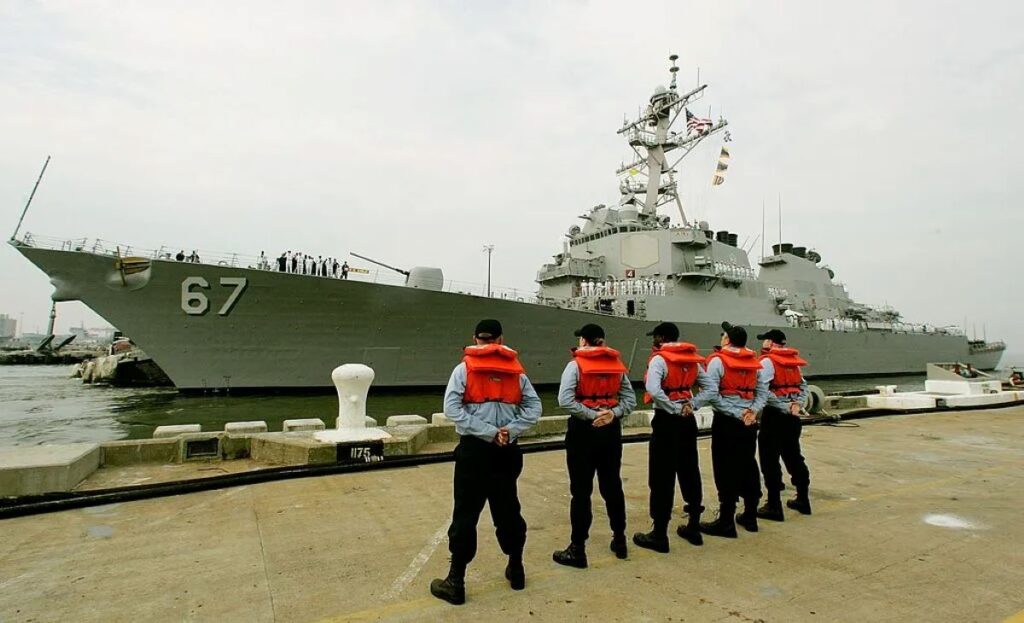
Houthi attacks on Red Sea shipping have summoned Tomahawk cruise missiles and Top Gun pilots from the deck of the USS Eisenhower. The newly-renamed Operation Poseidon Archer is just two weeks old, and the Biden Administration is already drawing up plans for a more prolonged effort despite admitting that defeating the Houthis is not viable.
Experts believe there is a risk of escalation in the Middle East, especially with the death of three U.S. soldiers after a drone strike in Jordan. But the effects on the U.S. Navy will be predictable because they have all happened before: overworked ships and sailors, expenditure of precious precision munitions, and a continued punt on the pivot to the Pacific.
The nuclear-powered aircraft carrier is the crown jewel of American military might. Its 5,000 sailors and 90 jet-strike aircraft can guarantee sustained ship-to-shore pummeling of adversaries and the purported deterrence this provides — in effect, modern gunboat diplomacy.
In any geopolitical crisis, the U.S. President will demand to know where the carriers are. The answer has usually been the Middle East for the past two decades throughout the “Global War on Terror” (GWOT).
ALSO READ: Massachusetts Governor Hails Navy SEAL Who Died While Saving Fellow SEAL During Mission
From 2001 to 2015, the United States Central Command (CENTCOM), which includes North Africa, the Middle East, and Central Asia, had at least one carrier assigned at all times. As late as 2020, the Middle East drew almost as much carrier presence as the Pacific.
Because of this relentless demand, carriers often have their deployments extended or are “double-pumped,” conducting back-to-back deployments without a significant maintenance period in between.
The last three carriers deployed in the Mediterranean were all extended: the USS Gerald R. Ford was at sea for 239 days, the USS Harry S. Truman for 285, and the USS George H. W. Bush for 257. This overwork has consequences. After the USS Dwight D. Eisenhower did two sets of double pumps, its subsequent 14-month maintenance period ballooned to 23 months because of wear and tear.
POLL — Should Donald J. Trump Be Allowed to Run for Office?
Over the past two decades, the Army and Marine Corps could point to their efforts, successful or not, on the battlefields of Iraq and Afghanistan. The Navy also needed to contribute at sea and ashore to maintain its status and budget. The Pentagon started looking to the Navy to step in with the all-volunteer military stretched to the breaking point.
Some 120,000 sailors would go on to serve on land during the GWOT. Many of these sailors, especially the reservists who are critical in any major war, have become “sailors in name only,” their naval proficiencies and mindset atrophying due to prolonged service ashore.
ALSO READ: FBI Arrests Self-Touted Militia Sniper Planning to Attack People at the Southern Border
According to experts, rebuilding the U.S. Navy is a long-term project that has barely begun, despite lip service from both political parties for years. Ships, to say nothing of shipyards, are not built overnight. Lost time and lost opportunities cannot be recovered.
But the U.S. can stop digging its Navy into a deeper hole through Middle East-driven overwork of ships and sailors. Fixing the fleet requires snapping the CENTCOM noose as quickly as possible.
You Might Also Like:
Hillary Clinton Blasts Tucker Carlson Over Putin Interview
Police Declare Stabbing of Palestinian-American Man a Hate Crime
Gun Owners in Georgia to Receive Boost Under New Tax Proposal
Critics Blast Virginia’s “Women’s Bill of Rights,” Say It Aims to Suppress Transgenders
Sheriff’s Office Arrests 11-Year-Old for Bringing Loaded Gun to School
